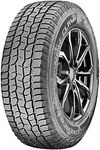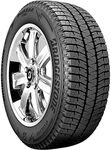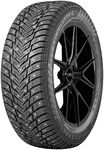Buying Guide for the Best Studded Snow Tires
Choosing the right studded snow tires is crucial for ensuring safety and optimal performance in winter driving conditions. Studded snow tires are designed to provide better traction on icy and snowy roads by incorporating metal studs into the tread. When selecting the best studded snow tires for your vehicle, it's important to consider several key specifications to ensure they meet your driving needs and conditions.Tire SizeTire size is a critical specification that refers to the dimensions of the tire, including its width, aspect ratio, and diameter. This information is usually found on the sidewall of your current tires or in your vehicle's owner's manual. Choosing the correct tire size is important because it ensures proper fitment and performance. Tires that are too large or too small can affect your vehicle's handling, fuel efficiency, and safety. To pick the right size, always refer to your vehicle's specifications and consider consulting with a tire professional if you're unsure.
Stud Count and PlacementThe number and placement of studs on a snow tire can significantly impact its performance on icy roads. More studs generally mean better traction, but they can also increase road noise and wear on dry pavement. Studs are typically arranged in a specific pattern to maximize grip. When choosing studded snow tires, consider the typical road conditions you encounter. If you frequently drive on icy roads, a higher stud count may be beneficial. For mixed conditions, a moderate stud count might be a better balance between traction and comfort.
Tread PatternThe tread pattern of a tire affects its ability to grip the road and channel away snow and slush. Studded snow tires often feature aggressive, deep tread patterns designed to bite into snow and ice. There are different types of tread patterns, such as directional, asymmetrical, and symmetrical. Directional patterns are designed for optimal performance in one direction, while asymmetrical patterns offer a balance of performance in various conditions. Symmetrical patterns provide consistent performance and are often quieter. Choose a tread pattern based on your driving habits and the typical winter conditions in your area.
Rubber CompoundThe rubber compound used in studded snow tires is formulated to remain flexible in cold temperatures, which is essential for maintaining traction. Softer compounds provide better grip on ice and snow but may wear out faster on dry roads. Harder compounds last longer but may not offer the same level of traction in extreme cold. When selecting a tire, consider the average winter temperatures in your region. If you experience extremely cold winters, a tire with a softer compound may be more suitable. For milder winters, a harder compound could be a better choice for longevity.
Load Index and Speed RatingThe load index indicates the maximum weight a tire can support, while the speed rating denotes the maximum speed at which the tire can safely operate. These ratings are important for ensuring that the tires can handle the weight of your vehicle and your driving speed. The load index and speed rating are usually found on the tire sidewall. To choose the right tires, match these ratings with your vehicle's requirements as specified in the owner's manual. Selecting tires with appropriate ratings ensures safety and optimal performance.
Noise LevelStudded snow tires can be noisier than regular tires due to the metal studs. Noise level is an important consideration, especially if you do a lot of highway driving. Some studded tires are designed with noise-reducing features to minimize this issue. When choosing studded snow tires, consider your tolerance for road noise and the type of driving you do. If you prioritize a quieter ride, look for tires that are specifically designed to reduce noise while still providing good traction on ice and snow.














